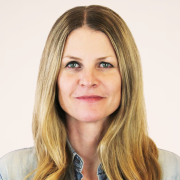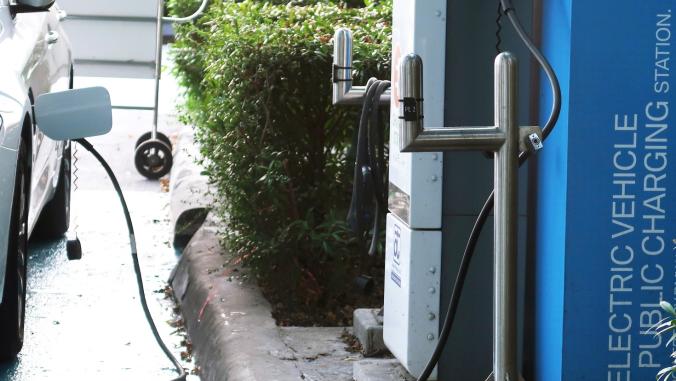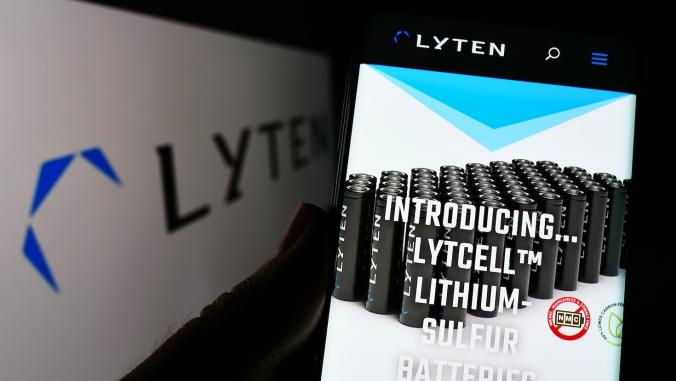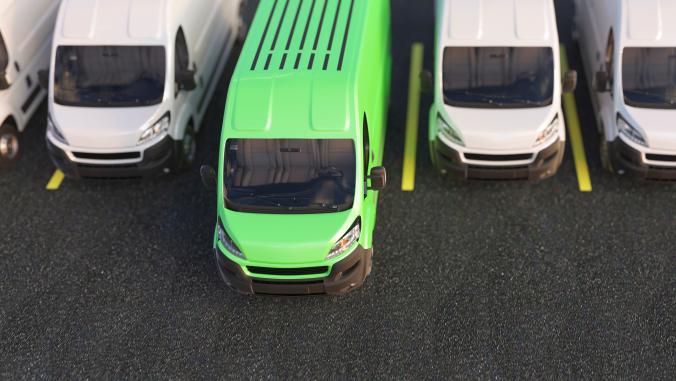Behind the scenes of the auto emission battle
Inside a conversation with California clean air warrior Mary Nichols.

From right: GreenBiz senior writer and transportation analyst, Katie Fehrenbacher, and California Air Resource Board chair, Mary Nichols.
This article has been adapted from Transport Weekly, GreenBiz's newsletter on transportation and mobility. Subscribe here.
Hello, readers! I missed you last week. You might not have noticed but I was so busy with our VERGE 19 event (video archive here) that I skipped out on last week's Transport Weekly.
But I'm back this morning, and super pumped (not in the Uber way) after a week of inspiring talks, deep conversations and meeting new people that are working on decarbonizing and electrifying transportation.
One highlight for me last week was getting the chance to interview California Air Resources Board Chair and clean air warrior Mary Nichols. Nichols has been an environmental lawyer for 45 years, and filed her first lawsuit against the Environmental Protection Agency back in 1975. She's been helping lead the battle against the Trump administration, which revoked California's waiver to set cleaner auto emissions standards than the federal government. She also led the creation of a unique framework that four automakers — Ford, BMW, Volkswagen and Honda — signed onto agreeing to meet the state's stricter auto emissions codes.
In our onstage conversation, we touched on the auto emissions battle, how California is trying to stop the trend of rising emissions from the transportation sector and lessons learned from her consensus-building work.
Here are five important takeaways from my interview with Nichols.
Why transportation standards are crucial: "I believe in technology’s ability to transform us, not just because it’s inherently good ... but because I've seen what happens if you set a standard by regulation, and then turn the ingenuity of our inventors to work. You can get technology to come forward, and it always seems to be cheaper than everybody said it was going to be."
How to curb the rise of California's transportation emissions: "We really have to double down on the 'zero' in the zero-emission vehicle world and move quickly in the direction of battery electric and fuel cell vehicles, particularly in the heavy-duty area, where we've got all of the trucks that are about half of the [transportation] emissions from our state. ...
"And we have to get a handle on the amount of overall driving that we’re doing because our VMT, vehicle miles traveled, have risen at about twice the rate of our population. For people moving into cities, in theory, they shouldn't have to drive as much because they're living in a more compact area. But because of mistakes we've made in the past with planning, we’ve made it hard for people to get around without cars. ... We have to have buses that go to where people need to go and are responsive to the changes in patterns of where people go to work, and those buses also have to be zero-emission."
Why California's stricter auto emissions standard is important: "The most important thing to know is that while this [legal battle] is going on, the world is moving forward, and the industry is in fact moving in the direction of producing more and better models of ZEVs, producing cars with better fuel economy each year. ... So we've got the opportunity with other tools and with the industry to accelerate the pace of change."We have to get a handle on the amount of overall driving that we’re doing because our VMT, vehicle miles traveled, have risen at about twice the rate of our population.
Why some automakers did — or did not — sign onto California's agreement: "The four companies that formally signed on to the framework are all companies that see the future as being in the direction of zero. It’s Volkswagen, which had a near-death experience when it was caught in a massive cheating scandal with its diesel vehicles, and so decided this was going to be its opportunity to remake the company ...
"BMW is a company that has a broader view of the transportation world. They do a lot of interesting work around urban mobility.
"The biggest of the companies that signed on with us is Ford, and it's among the big U.S. companies that went to the White House and told the president it didn’t want the rollback. The president essentially told the company it didn’t know what it was talking about and that he knew what was best for it. And that was just not acceptable. ... Ford decided that being with California was a better place to be. ...
"We talked about Ford vs. General Motors. My experience going back to the Clinton administration was that General Motors was always a laggard when it came to being a part of adopting newer, more progressive standards for the environment, but it gets there. It was also, as you may remember, back in 2008/2009, it went through a bankruptcy, and was in terrible shape, mostly because of the falling apart of our financial institutions. So it embraced the Obama standard. But the minute it got back on its feet, it went back to its old ways."
Lessons learned about building a consensus around issues: "I think it’s always important to be looking ahead and looking toward what strategies maybe haven’t been tried, as well as fishing around in your attic for things that have been done before or have worked before, but haven’t been tried in a while. This framework agreement is essentially a voluntary standard and we can’t force anyone to comply with our standard. We’re basically saying come enter in an agreement with us, sign a memorandum and we’ll have a voluntary agreement and we’ll get the same results that we do with regulation.
"This is an idea that actually I helped to bring forward back in the Clinton years when we were working on trying to meet ozone standards in the Northeast. ... We went to the industry and asked them to agree to some standards, which they would have fought to the death if we had tried to impose them by regulation. ... This was not a new invention from this past year; we’ve been here before.
"In that sense, it’s helpful to have had the experience of the early days of the Clean Air Program to see some of the things we’ve been through and how we’ve overcome some of these difficulties."




